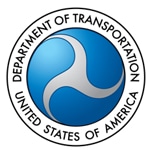Data indicates that transportation industry growth will add 417,000 skilled and semi-skilled job openings from 2012 to 2022.

“Careers in the transportation industry can lift Americans into the middle class or help them stay there, and this report concludes that there will be more job opportunities in the near future,” said U.S. Secretary of Transportation Anthony Foxx. “We want to fill all these new positions, so industry and government must increase recruitment and help young people get the skills, training, and apprenticeships they need to gain entry into these careers.”
The report indicates that employers will need to hire and train a total of 4.6 million new workers – 1.2 times the current transportation workforce – due
Much of the regional transportation job growth is driven by growth in the large metropolitan areas within those regions – the highest number of job openings in transportation will likely be generated in New York City, Dallas, Los Angeles, Houston, and Chicago. In addition, these jobs will pay relatively well. Thirteen out of the top 20 highest demand transportation jobs pay above the median wage, sometimes substantially.
“Ensuring that America continues to lead the way in the global economy means not only investing in the physical infrastructure that allows us to move goods and keep up with global demand, but also the skills infrastructure to support this growing workforce,” said U.S. Secretary of Labor Thomas E. Perez. “Through smart investments in apprenticeships and other work-based training programs, transportation jobs are helping millions of Americans punch their tickets to the middle class.”

But the report also highlights a significant skills gap in the demand for and supply of high skilled workers; it indicates that projected annual job openings are 68 percent larger than the number of students who are completing related educational programs annually across selected transportation occupational groups. One solution is an increase in Career and Technical Education programs of study. Such programs begin in high school and continue into postsecondary education or apprenticeship and provide the foundational and early occupational skills training needed in skilled occupations. Pre-apprenticeship programs for disadvantaged youth and adults can prepare low-skilled and underrepresented populations for entry into these skilled positions. Furthermore, Career Pathways systems that are aligned with Registered Apprenticeship programs can expand the number of people who can access these high-demand jobs.
“In today’s society, it is important that all of our students are well-equipped with the knowledge and skills to compete in a global economy,” said U.S. Secretary of Education Arne Duncan. “There are incredible opportunities for Americans in the transportation industry and the Department is fully committed to working with leaders in the industry to promote partnerships between education and workforce institutions in order to support training programs that will help our country succeed.”
Read the full report here.